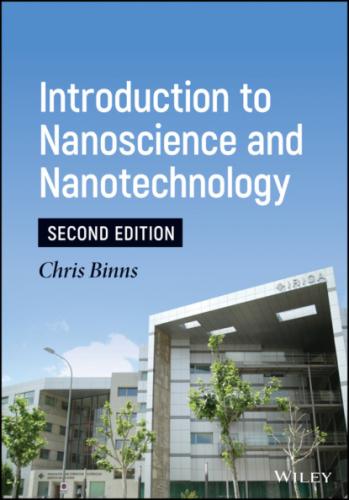Table of Contents
1 Cover
6 Introduction to Second Edition I.1 Incremental Nanotechnology I.2 Evolutionary Nanotechnology I.3 Radical Nanotechnology I.4 Bottom–Up/Top–Down Nanotechnology References
7 1 Size Matters 1.1 The Fundamental Importance of Size 1.2 The Magnetic Behavior of Nanoparticles 1.3 The Mechanical Properties of Nanostructured Materials 1.4 The Chemical Properties of Nanoparticles 1.5 Nanoparticles Interacting with Bacteria and Viruses Problems References
8 2 Nanoparticles and the Environment 2.1 Nanoparticles in the Atmosphere 2.2 Atmospheric Nanoparticles and Health 2.3 Nanoparticles and Clouds 2.4 Marine Aerosol 2.5 Effect of Cosmic Rays on Atmospheric Aerosol 2.6 Nanoparticles in Space 2.7 Environmental Applications of Nanoparticles Problems References
9 3 Carbon Nanostructures 3.1 Why Carbon? 3.2 Discovery of the First Fullerene – C60 3.3 Structural Symmetry of the Closed Fullerenes 3.4 Smaller Fullerenes and “Shrink‐Wrapping” Atoms 3.5 Larger Fullerenes 3.6 Electronic Properties of Individual Fullerenes 3.7 Materials Produced by Assembling Fullerenes (Fullerites and Fullerides) 3.8 Discovery of Carbon Nanotubes 3.9 Structure of Single‐Wall Carbon Nanotubes (SWNTs) 3.10 Electronic Properties of SWNTs 3.11 Electronic Transport in Carbon Nanotubes 3.12 Field Emission from Carbon Nanotubes 3.13 Mechanical Properties of Nanotubes 3.14 Thermal Conductivity of Nanotubes 3.15 Carbon Nanohorns 3.16 Carbon Nanobuds and Pea Pods Problems References
10 4 Graphene 4.1 Background 4.2 Electrical Properties of Graphene 4.3 Graphene as a Testbed for Relativistic Quantum Effects 4.4 Thermal Conductivity of Graphene 4.5 Mechanical Strength of Graphene 4.6 Superconductivity in Graphene Bilayers 4.7 Current Technological Applications of Graphene 4.8 Summary Problems References
11 5 The Nanotechnology Toolkit 5.1 Making Nanostructures Using Bottom–Up Methods 5.2 Making Nanostructures Using Top–Down Methods 5.3 Combining Bottom–up and Top–Down Nanostructures 5.4 Imaging, Probing, and Manipulating Nanostructures References
12 6 Single‐Nanoparticles Devices 6.1 Data Storage on Magnetic Nanoparticles 6.2 Quantum Dots 6.3 Quantum Dot Solar Cells 6.4 Nanoparticles as Transistors
